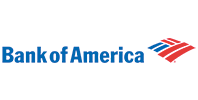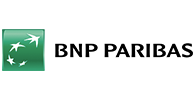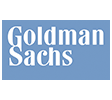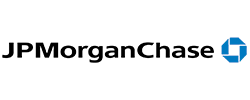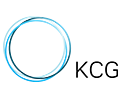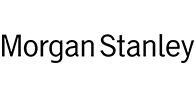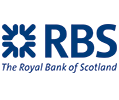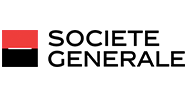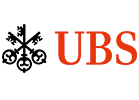How to Trade When Interest Rate Policies Diverge
Hello traders, ever feel like you’re watching a race where the runners suddenly decide to take different paths? That’s kind of what’s happening in the world of central banking right now, heading into mid-2025. The big players – the US Federal Reserve (Fed), the European Central Bank (ECB), the Bank of England (BoE), and others, aren’t all marching to the same beat when it comes to interest rates.
Some are tapping the brakes (keeping rates steady or hinting at future hikes), while others are starting to ease off the accelerator (cutting rates). This is what experts call “monetary policy divergence,” and it’s a major theme shaking up the Forex market.
But what does that actually mean for you and your trades? Why should you care if the Fed in Washington and the ECB in Frankfurt have different ideas about interest rates? Let’s break it down simply.
What Exactly is Monetary Policy Divergence?
At its heart, “monetary policy” is the toolkit central banks use to manage their country’s economy. Their main goals are usually stable prices (low inflation) and maximum employment. The most powerful tool in their kit? Interest rates.
- Raising Rates (Tightening): Makes borrowing more expensive. This tends to slow down spending and investment, helping to cool down an overheating economy and fight inflation. Think of it as tapping the economic brakes.
- Lowering Rates (Easing): Makes borrowing cheaper. This encourages spending and investment, aiming to boost a sluggish economy. Think of it as pressing the economic accelerator.
“Divergence” simply means that different central banks are doing different things with these tools at the same time.
For example, right now (mid-2025):
- The Fed recently held its interest rates steady after a period of aggressive hikes. They’re signaling caution, wanting more proof that inflation is truly beaten before they consider significant cuts. They’re worried about things like potential tariffs possibly pushing prices up again.
- The ECB, on the other hand, recently made a small rate cut. Their reasoning? While inflation isn’t totally gone, they see it heading the right way, and the Eurozone economy needs a bit more support than the US economy seems to.
- The BoE is somewhere in the mix, watching its own inflation data very closely before deciding whether to hold steady or start cutting rates soon.
This difference in approach – one bank holding firm while another starts easing – is what we refer to as divergence in action.
Why Does Divergence Matter So Much for Forex?
Interest rates are like magnets for global money. Big investors, pension funds, and banks are always looking for the best safe return on their cash.
Imagine you have savings. If Bank A offers 5% interest and Bank B offers 3%, you’d likely lean towards Bank A, right? Global capital works similarly.
When a country’s central bank raises interest rates (or is expected to keep them higher for longer), its currency can become more attractive to foreign investors. To invest there, they need to buy that country’s currency. This increased demand can push the currency’s value up.
Conversely, if a central bank cuts interest rates (or is expected to cut them more aggressively than others), its currency might become less attractive. Investors might sell that currency to move their money elsewhere for better returns, increasing supply and potentially pushing its value down.
So, divergence creates winners and losers in the currency world. The currency whose central bank is tightening might strengthen against the currency whose central bank is easing (or expected to ease more).
Strategies to Consider With Caution
Understanding divergence can open up potential trading ideas, but always remember the risks involved. Here are a couple of common approaches:
- Policy Divergence Trend Trading: This is perhaps the most straightforward idea. Identify two countries whose central banks are clearly moving in opposite directions (one tightening/holding, one easing). The strategy involves buying the currency of the tightening/holding country and selling the currency of the easing country, expecting the exchange rate to move in favour of the stronger monetary policy stance over time.
- Example: Based on the current situation, if you strongly believe the Fed will hold rates steady while the ECB continues to cut, you might consider going long USD/short EUR (trading EUR/USD downwards).
- Caveat: Markets often “price in” expected moves before they happen. If everyone expects the Fed to hold and the ECB to cut, the big move might have already occurred. Success relies on identifying divergences before they are fully priced in, or spotting when market expectations change.
2. Carry Trade: This strategy focuses directly on the interest rate differential between two currencies. You borrow money in a currency with a very low interest rate (like the Japanese Yen, traditionally) and invest it in a currency with a significantly higher interest rate. Your potential profit comes from earning the interest rate difference (the “carry”) over time.
- Example: If US interest rates are 4.5% and Japanese rates are near 0%, a carry trader might borrow Yen, convert it to Dollars, and invest in US assets to earn that ~4.5% difference. This involves being short JPY and long USD.
- Caveat: Carry trades are vulnerable to exchange rate risk. If the currency you bought suddenly weakens significantly against the currency you borrowed, those losses can wipe out (and exceed) the interest earned. Carry trades work best in low-volatility environments where exchange rates are relatively stable or moving in your favour. High volatility or unexpected policy shifts can make them risky.
Reading Between the Lines
Central banks don’t just change rates; they talk! Paying attention to their official statements, press conferences, and meeting minutes is crucial. This is what we refer to as “forward guidance.”
- Tone: Are they sounding optimistic (“hawkish”) about the economy and worried about inflation (suggesting rates might stay high)? Or are they sounding cautious (“dovish”) about growth and less worried about inflation (suggesting cuts might be coming)?
- Keywords: Look for changes in wording from previous statements. Phrases like “data-dependent,” “vigilant,” “patient,” or “risks are balanced” all carry subtle clues.
- Forecasts: Central banks often release economic projections. Changes in their forecasts for growth or inflation can signal future policy shifts.
Sometimes, the talk matters more than the immediate action. A rate hike accompanied by surprisingly dovish talk could actually weaken a currency!
Managing the Risks
Trading based on policy divergence isn’t a sure thing. Risks include:
- Sudden Policy Shifts: Central banks can change their minds quickly if economic data surprises them.
- Market Expectations: As mentioned, moves might already be priced in.
- Other Factors: Geopolitics, economic shocks, or shifts in market sentiment can override policy divergence themes.
Always use robust risk management:
Use stop-loss orders.
Don’t over-leverage your account.
Understand the potential downside before entering a trade.
Stay informed, but don’t chase every headline.
To Round Up
Monetary policy divergence is a powerful force in today’s Forex market. Understanding why central banks like the Fed and ECB are taking different paths, and how those paths affect interest rate differentials, is key to spotting potential trends and risks. While strategies like trend following or carry trades can emerge from these divergences, they require careful analysis, attention to central bank communication, and, above all, disciplined risk management. Keep learning, stay aware, and trade wisely!
Disclaimer: This article is for educational purposes only and does not constitute financial or investment
advice. Forex trading carries a high level of risk.
before: How Will Forex Markets Handle the 2025 US-China Trade War?
